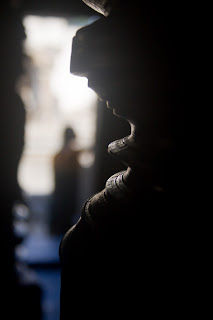The Mudumalai National Park and Wildlife Sanctuary now also declared a Tiger Reserve, lies on the northwestern side of the Nilgiri Hills (Blue Mountains), in Nilgiri District, we reached Mudumalai from the other side of tamilnadu i.e., from Mysore. The park is most conveniently accessible by road from Mysore on NH 212. A little past Bandipur cross the Ari Gouder bridge to a state border check post, passing here one will enter Mudumalai National Park – This was the route which took to reach our location in Mudumalai.
Mudumalai, which means 'first hills’, is one of the first wildlife sanctuaries established in India. The sanctuary is divided into 5 ranges - Masinagudi, Thepakadu, Mudumalai, Kargudi and Nellakota.
Here one can often spot herds of endangered Indian elephants, vulnerable Gaur, and Chital. The sanctuary is a haven for Bengal Tigers and Indian Leopards and other threatened species.
The Western Ghats, Nilgiri which is about 6 ,000 km including all of Mudumalai National Park, is under consideration by the UNESCO World Heritage Committee for selection as a World Heritage Site.
I have seen many blogs and websites, most of them talked about Elephants and Tigers but for a change I have tried to capture insects, flowers and some manuals which my lens could capture.
The enchanting flowers & plants
Insects - The gentle earth movers
Bamboo brakes are found amidst dry deciduous, moist deciduous and semi-evergreen forests and along the fringes of riparian forests and swamps, we did a 3 km treak into the forest and the path was so swamped that our leader Mr Ramani sir had a tough time walking in the forest. There are two species of bamboo found in Mudumalai. Elephants and Gaur eat both species of bamboo.
The delicious bamboo flakes
The swamp that gave our leader Ramani Sir a tough time :)
The love for nature can find beauty everywhere ,....
Folks who are found common in this part of western ghats - which will not miss your eyes,...
There is a high diversity of animal life in the sanctuary with about 21 species of amphibians, 34 species of reptiles, 227 species of birds and 55 species of mammal. We had couple of our friends who wanted to take birds and they got to take a few only – everything needs time and luck for spotting birds. But we as people should leave these animals live at peace and PLEASE AVOID PLASTICS AT THE PARKS





























